
Director's Report
Dear fellow conservationists,
As I write this, it’s cold and frosty outside. I hope when you receive this, we will be beginning to see signs of that warm and friendly visitor we welcome this time of year—spring!
I find the change of seasons presents an opportunity to embrace transition with grace and adaptability. This edition of Environmental Currents is about transitions: Completed, envisioned, studied to understand the effects of and in progress. We also embrace transitions by very dear and esteemed colleagues.
“The Birth of a Preserve” presents the story of our wonderful collaboration with the Thouron Family and the Oxford Area Foundation to transition the magnificent Glenroy property from a family treasure to one that others will, in the near future, be able to visit and enjoy as a publicly accessible preserve along the banks of the Octoraro Creek. What an honor to have been part of this! According to the Daily Local News, “The acquisition means that 30 percent of land in Chester County is now preserved, larger than the sizes of Philadelphia and Pittsburgh combined.”
Also in this issue, hear from Matt Meyer, County Executive for New Castle County in Delaware, about his visions for the future in the County, a key policy focus with his GreeNCC agenda, his thoughts on the Brandywine Creek Greenway, and how he is realizing all this through collaboration; read about the ongoing work and updates from the Delaware River Watershed Initiative; and investigate how plants defend themselves, especially now in times of change.
For your reading pleasure, we present an update on bobcats at the Brandywine’s Penguin Court Preserve—a very charismatic and interesting mammal. We always get such great feedback about our bobcat studies at Penguin Court with our partners at Duquesne University!
We also honor our 495th conservation easement protecting nearly 40 acres adjacent to and expanding the protection area of the First State National Historic Park, graciously donated by Mrs. Diana E. McCarthy. And we transition with the retirement at the end of last year of John Theilacker, longtime Associate Director and architect of the Conservancy’s Municipal Assistance Program. John will be sorely missed by all of his colleagues and mentees at the Brandywine, but will continue working with us on municipal and watershed planning—for this we are grateful.
Finally, we note the upcoming retirement of Andy Johnson, William Penn Foundation’s Watershed Protection program director. I’ve known Andy for many years from our time together at Pennsylvania Environmental Council and got the chance to work with him, along with many Conservancy staff, again on the Delaware River Watershed Initiative. Andy’s dedication, professionalism and kindness have been cornerstones of his career and his work.
Amidst all this change, the Conservancy staff has not missed a beat during the pandemic as we continue to work with you, our partners, in conservation toward our shared visions and goals. Thank you, a million times thank you, for all of your support and kind words.
Stay well,
Ellen
Ellen M. Ferretti
Director, Brandywine Conservancy
The Birth of a Preserve

How do you help a family transition their almost 1,000-acre farm into nature preserve? As the Beatles once sang, “with a little help from my friends.” Well, really, with A LOT of help!
Thanks to the Brandywine Conservancy’s long history in the Oxford area, the Thouron family reached out and asked the Conservancy to develop a land preservation plan to protect their property in perpetuity.
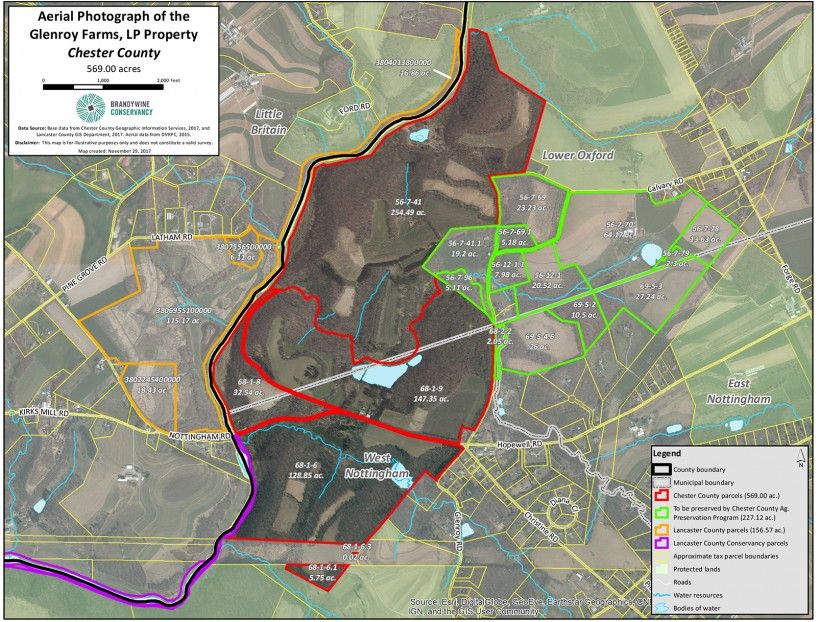
The family accepted the Conservancy’s strategy that broke the preservation project into three parts:
- 227 acres of highly productive agricultural lands would apply to be preserved though an agricultural easement through the Chester County Farmland Preservation Program (outlined on the map in green — completed in December 2018
- 569 + acres of mostly wooded lands along the Octoraro Creek would be acquired and turned into a nature preserve (outlined on the map in red) — completed in December 2020
- 156 acres in Lancaster County, also along the Octoraro Creek, would be acquired and added to the nature preserve (outlined on the map in brown) — ongoing, pending funding.
From early on in the process, another “friend” emerged as an integral part of the equation: the Oxford Area Foundation (OAF). With firm roots in the region and a desire to help in the preservation of this land as a publicly assessable nature preserve, OAF provided the final partner in this effort to protect and manage this magnificent land.
The most recent portion to be protected is the 569 + acres situated along the Octoraro Creek in Lower Oxford Township and West Nottingham Township, Chester County, PA. The land consists of open meadows, arable cropland, mature and successional woodlands, numerous streams and ponds, floodplains and wetlands, and five miles of trails—plus an access easement area comprising of 16 acres to an adjacent, nearly three-mile long strip of land situated at the top of the east bank of the Octoraro Creek and extending to the centerline of the creek.
“For over 50 years, four generations of Thourons have been the owners and privileged stewards of Glenroy Farm,” said Rachel Nicoll, Thouron family member. “The Thouron family is delighted that now, with the help of the Brandywine Conservancy, this deeply treasured property, of great natural beauty, will be conserved in perpetuity. It is the family’s hope that this land will be valued and enjoyed by the community for generations to come.”

Now owned and managed by OAF, the 569+ acres will be used as a publicly accessible nature preserve. OAF hopes to have the park open for the public by late spring or early summer.
“This is an outstanding achievement for the Brandywine Conservancy, working in partnership with the Oxford Area Foundation, the PA Department of Conservation and Natural Resources (DCNR) and Chester County,” said Ellen Ferretti, director of the Brandywine Conservancy. “The acreage and diversity of resources made this property a high priority of permanent protection in southeastern Pennsylvania. The transition of the Glenroy Farm property from the Thouron family to a public preserve will create a unique, contiguous area of public open space that will provide exceptional recreational and educational opportunities for the community and will have lasting effects on the water quality of the Chesapeake Bay—a national priority for conservation. It has been a wonderful experience to work with OAF and the Thouron family to conserve this beloved land, in perpetuity, for the public good.”
The acquisition was generously funded by grants from DCNR and the Chester County Preservation Partnership Program, Oxford Area Foundation and the Brandywine Conservancy.
“DCNR is pleased to partner with the Brandywine Conservancy, Chester County and the Oxford Area Foundation to support the preservation of this regionally important property that will provide a unique, contiguous area of public open space, and offer exceptional regional recreational opportunities for residents of both Chester County and Lancaster County,” said DCNR Secretary Cindy Adams Dunn. “This property will safeguard wildlife habitat, provide new recreation opportunities and protect the waters of Pennsylvania and the Chesapeake Bay.”
Chester County Commissioners Marian Moskowitz, Josh Maxwell and Michelle Kichline said, “Projects like Glenroy Farm, that maintain beautiful areas to be enjoyed by residents and visitors, illustrate the thoughtful, planned approach that Chester County takes to preserving land. For over 30 years, Chester County has been following that plan, which is why our preservation efforts are smart, why they encourage partnerships with conservancies, the Commonwealth, municipalities and other organizations, and why the County’s ‘quality of place’ is so attractive to businesses that want to be located here, and people who want to live here.”
“Owning Glenroy is a major component in the Oxford Area Foundation’s vision and we are thrilled that we now hold this amazing property and that we will be able to provide this region with such an important public space to enjoy,” said Nancy Ware Sapp, President of the foundation. “In the coming months, OAF will be working on trails and a parking area and hopes to have the property open for passive recreation by late spring to early summer.”
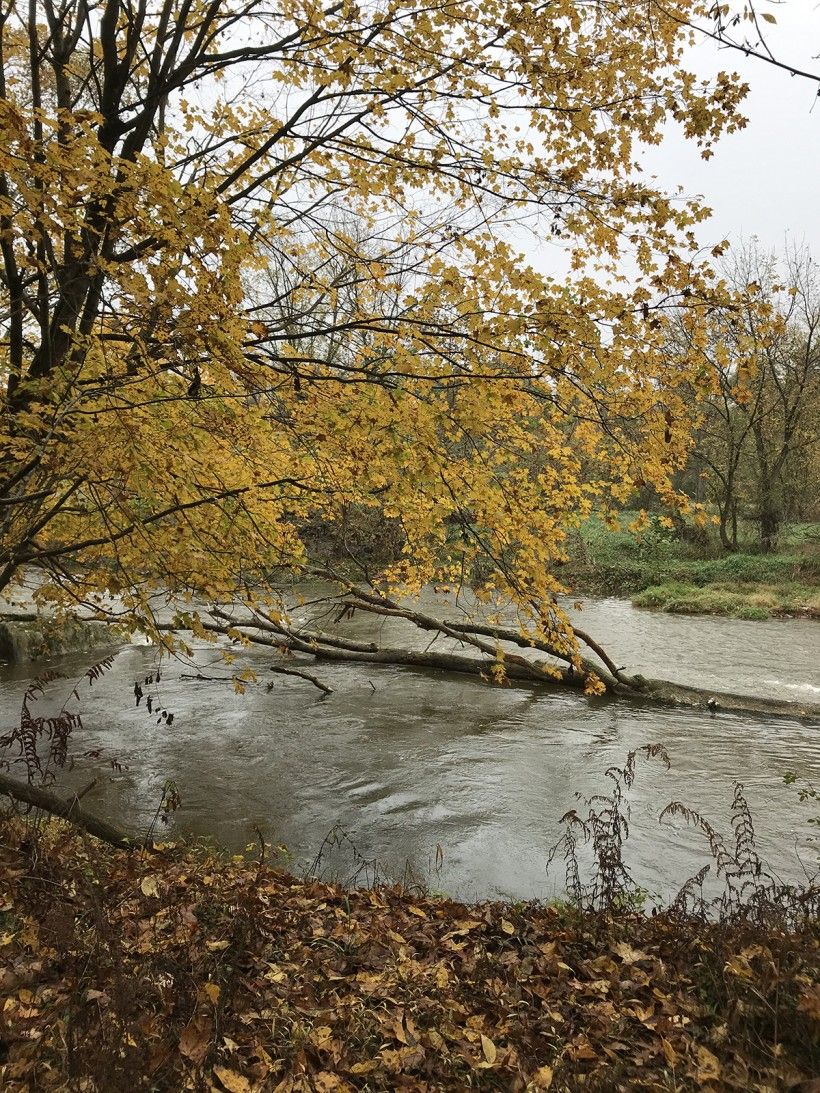
Highlights of Natural Resources on the Glenroy Preserve
- Two stream miles
- 73 acres of floodplain
- 407 acres of mature and young woodlands
- 320+ acres of Prime Farmland Soils and Soils of Statewide Importance.
- Five miles of established trails and a launch to access Octoraro Creek
- 569+ acres of open space preserved
- Stunning public views from the Creek and local roads. Its unique size and diversity of resources made this property a high priority of permanent protection in southeastern Pennsylvania.
- Helps implement the Octoraro Creek Watershed Action Plan
- Helps enhance the water quality of the Chesapeake Bay, which is a national priority for water quality protection and improvement because of its importance as a natural, cultural, and major economic resource. The Octoraro Creek is a tributary of the Susquehanna River, which in turn flows to the Chesapeake.
- Offers an opportunity to continue traditional rural land uses. Over 2,000 acres of land within a one-mile radius have been preserved with conservation easements granted to the counties of Chester and Lancaster or land conservation organizations.
Q&A with Matt Meyer, County Executive for New Castle County, Delaware
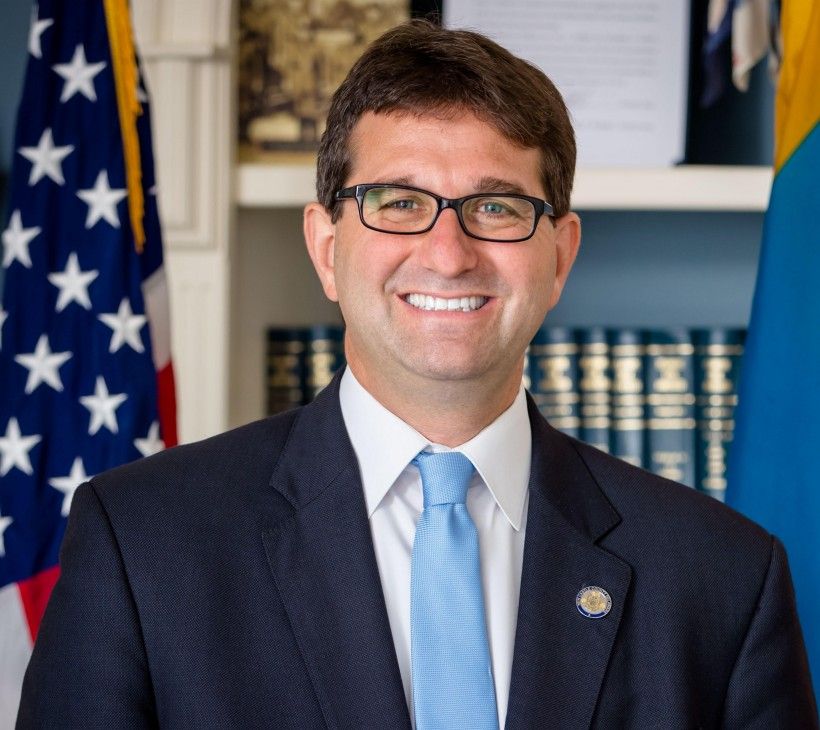
In the Q&A session below, we chatted with Matt Meyer, County Executive for New Castle County, Delaware. When Meyer first ran for public office in 2016, he was a sixth and seventh grade Math teacher. He defeated a heavily favored three-term incumbent in a grassroots campaign to serve as the Chief Executive of Delaware’s largest county. A key policy focus is his GreeNCC agenda, aimed at addressing climate change, preserving open space, creating bikeable walkable trails and promoting clean water. In his spare time, you can often find him riding his single speed bike on pathways in New Castle County.
Click here to read more.
Protecting and Restoring Water Quality in Times of COVID

Despite the challenges of the COVID-19 pandemic, the Brandywine Conservancy staff continues their work as the coordinator of the Brandywine-Christina Watershed Partners through the Delaware River Watershed Initiative (DRWI). Funded by the William Penn Foundation, the DRWI aims to protect and restore water quality in the Delaware River Basin. The Foundation recently approved a one-year extension of the Partners’ existing DRWI grants, which has enabled so many great projects to continue to flourish—even during the pandemic.
Recent projects include facilitating the protection of a 30-acre farm in the headwaters of the Brandywine with a County-held agricultural conservation easement—a continuation of our longstanding commitment to preserve lands in this region. Over the past year, the Partners also have worked with over a dozen farmers and other landowners to further protect streams and water quality by installing a myriad of Best Management Practices (BMPs) and planting several acres of forested stream buffers.
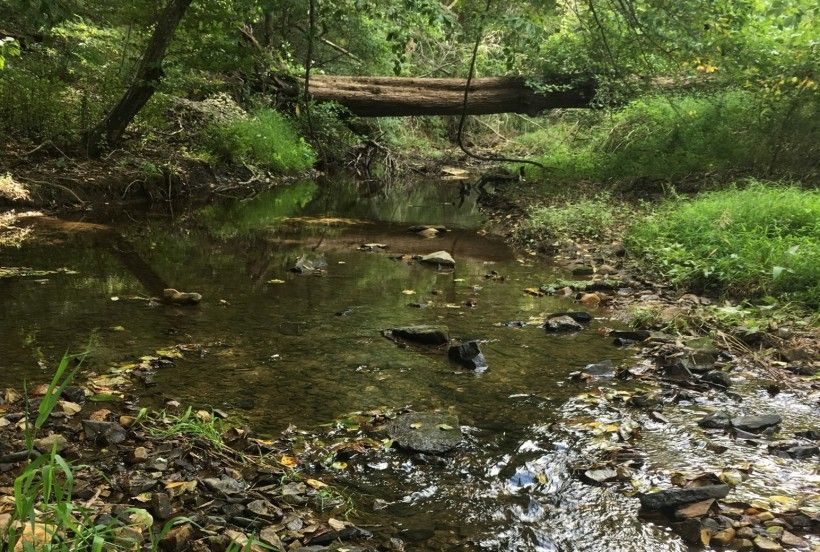
Currently the Partners are thoroughly engaged with key stakeholders in the preparation of a Watershed Conservation Plan for Bennett’s Run, which joins the Brandywine in Pocopson Township, as well as working with the White Clay Creek Watershed Association to complete construction of a rain garden in West Grove Borough. We are actively working with six other municipalities on regulatory issues; participating in the development of Chester County’s updated Act 167 Stormwater Management Plan and its Watersheds 3 Plan; and collaborating with the Christina Watersheds Municipal Partnership to provide technical assistance to municipalities to help them comply with federal stormwater and stream pollution requirements.

In addition to the current ongoing projects, the Partners are preparing a work plan for 2022-2025 and will be seeking another three-year grant from the Foundation to both continue and expand upon the impact of the great conservation work started under the DRWI.

Formed in 2013, the DRWI’s Brandywine-Christina Watershed Partners include the Brandywine Conservancy, Brandywine Red Clay Alliance, Natural Lands, Stroud Water Research Center, The Nature Conservancy in DE & PA, and the University of Delaware’s Water Resources Center. Working together, their goal is to protect and restore water quality in the streams that encompass the Brandywine – Christina watershed (the Brandywine, Red Clay and White Clay creeks and the Christina River) through a variety of methods, including: farmland preservation; stream restoration; implementation of agricultural Best Management Practices (BMP); helping municipalities improve regulations addressing water quality and comply with state and federal regulations; educating the public; and establishing a revolving water fund to provide sustained financing of water restoration and/or protection projects. Encompassing four Focus Areas, the Partners’ work is concentrated in the West Branch of the Brandywine Creek headwater reaches, Plum Run watershed, and the headwater reaches of the Red Clay Creek and the East and Middle Branches of the White Clay Creek.
While the Partners’ continue to meet and overcome the many challenges posed by the pandemic, we all look forward to the day when we can leave our masks at home and host in-person meetings with our partners in conservation and in the fields and farms where they work and live.
Penguin Court: Where the Bobcats Roam
Located in the Laurel Highlands of Western Pennsylvania, the Brandywine’s Penguin Court Preserve boasts 923 acres of land that is largely forested and home to a wide variety of wildlife. In the below article, read about an ongoing project with Duquesne University Department of Biological Sciences to study and monitor the high occurrence of bobcat sightings on the property.
Click here to read more.
A Gift to Community and Nature
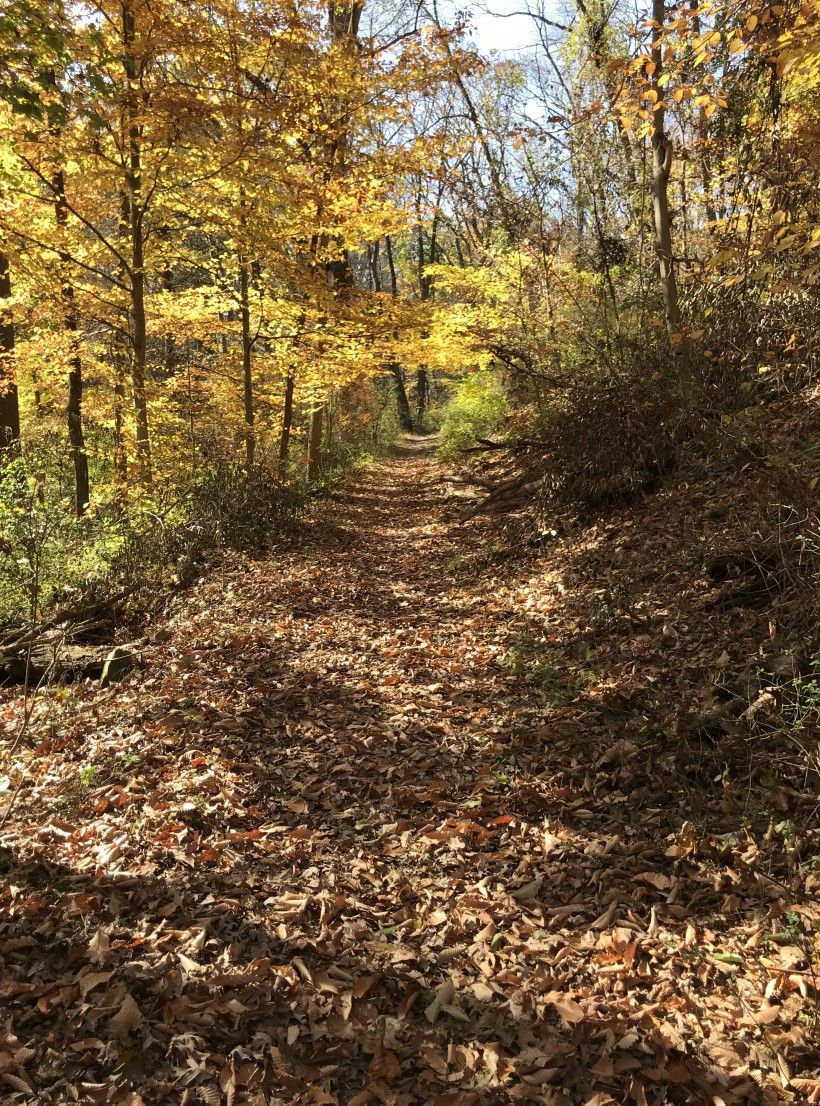
Only days before year end, the Brandywine Conservancy secured its 495th conservation easement protecting nearly 40 acres adjacent to the First State National Historic Park in Delaware. The easement was donated by Mrs. Diana E. McCarthy, who together with her late husband, H. John “Jack” Michel Jr., had lovingly cared for the property—which had been in Jack's family for decades—restoring its historic structures. The farmhouse, dating back to at least 1776, is considered one of the last original mill owner houses in Beaver Valley and the barn is circa 1772. Jack conducted extensive personal research about the history of the valley which he readily shared with others. Both he and Diana actively helped conserve nearby lands, and Jack had discussed conserving his family property before he passed away. It was Diana who fulfilled his wish. “The easement guarantees that this historical property, with its many vistas and animal habitats, will remain permanently untouched by development. My family and I think of it as our gift to the community and nature,” said Mrs. McCarthy.
The property, known as Beaverbrook Farm, contains open hay and pasture fields, mature and successional woodlands, steep rocky cliffs, multiple springs and first-order streams, and a section of Beaver Creek—which flows directly into the Brandywine. We are thrilled that this property will now be protected in perpetuity.
Happy Retirement to the Brandywine’s Longtime Conservancy Staff Member
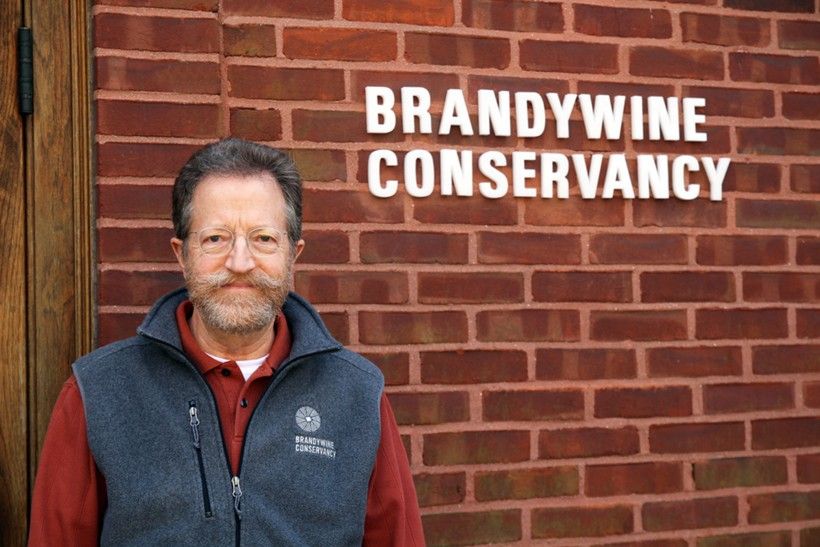
The Brandywine Conservancy wishes a happy and much-deserved retirement to its Associate Director, John Theilacker, AICP Certified Planner. With a 37-year career of planning work at the local level in both the public and private sectors, Theilacker spent 22 of those years working at the Brandywine Conservancy. During his time at the Brandywine, as an associate director, Theilacker helped Pennsylvania municipalities develop innovative conservation and land use practices to protect and enhance natural resources and support community resilience. A leader in the planning community, he also served as a volunteer member of the West Chester Borough Planning Commission for a number of years, including as the chair of the commission.
“We will forever be grateful for John’s decades of expertise, service and leadership in this field,” noted Ellen Ferretti, Director of the Brandywine Conservancy. “Coupled with the recent recognition he received from the Pennsylvania Chapter of the American Planning Association (APA) and WeConservePA last year, as well as a mayoral citation of recognition and key to the Borough of West Chester in 2019, John’s legacy speaks for itself. It has been a personal and professional honor to work with John at Brandywine.”
Carrying the torch forward, Grant DeCosta, Assistant Director for Community Services, is leading the Conservancy’s work in Municipal Assistance with a focus on climate resiliency and an expanded effort toward offering additional land stewardship services to our partners in conservation.
We hope you’ll join us in congratulating John on his retirement and thanking him for his dedicated service over the years.